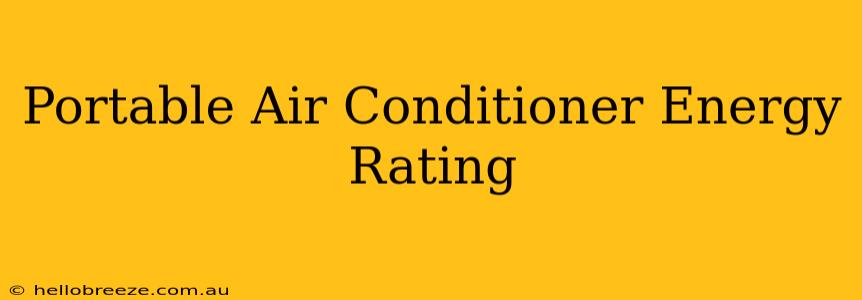Choosing a portable air conditioner can be tricky. With so many models available, understanding the energy rating is crucial to saving money and reducing your environmental impact. This guide will help you navigate the world of portable AC energy ratings, ensuring you find the perfect, energy-efficient unit for your needs.
Understanding Energy Efficiency Ratings
Portable air conditioners, like other appliances, are rated for energy efficiency. These ratings help you compare the energy consumption of different models and choose the most economical option. Key ratings to look for include:
Energy Efficiency Ratio (EER)
The EER measures the cooling output (in BTUs) per watt of electricity consumed. A higher EER indicates greater efficiency. For example, a unit with an EER of 12 will produce 12 BTUs of cooling for every watt of electricity used. Look for portable AC units with a higher EER for better energy savings.
Energy Star Rating
The Energy Star rating is a valuable indicator of a unit's energy efficiency. Units with the Energy Star label meet specific energy-efficiency guidelines set by the EPA (Environmental Protection Agency) and the Department of Energy. Choosing an Energy Star certified portable AC ensures you are selecting a highly efficient model.
SEER (Seasonal Energy Efficiency Ratio)
While less commonly found on portable AC units compared to window or central AC, SEER is still a relevant metric. It considers the cooling performance over an entire cooling season, providing a more comprehensive picture of efficiency. A higher SEER rating signifies better overall efficiency.
Factors Affecting Energy Consumption
Several factors beyond the energy rating influence your portable AC's energy use:
- Room Size: A unit too small for the room will work harder, consuming more energy. Always choose a portable AC with enough BTU capacity for your space. Use online BTU calculators to determine the appropriate size.
- Insulation: Poorly insulated rooms lose cooled air more quickly, forcing the AC to run longer and consume more energy. Improve your home's insulation to maximize the efficiency of your portable AC.
- Window Sealing: Properly sealing the window through which your exhaust hose vents is crucial. Air leaks negate the cooling effect and increase energy consumption. Use window sealant kits to create an airtight seal.
- Maintenance: Regular cleaning of the air filter and coils improves airflow and efficiency. Clean your air filter every few weeks to maintain optimal performance.
Tips for Choosing an Energy-Efficient Portable AC
- Compare EER and SEER ratings: Don't just look at the price; consider the long-term cost savings from higher efficiency ratings.
- Read reviews: Customer reviews often provide valuable insights into a unit's actual energy consumption.
- Consider smart features: Some portable ACs have smart features that allow you to control and monitor energy usage.
- Look for Energy Star certification: This ensures the unit meets high efficiency standards.
- Check the BTU capacity: Make sure the unit is appropriately sized for the room you intend to cool.
Save Money and the Planet with an Energy-Efficient Portable AC
By carefully considering the energy rating and following these tips, you can find a portable air conditioner that keeps you cool without breaking the bank or harming the environment. Investing in an energy-efficient model is a smart choice for both your wallet and the planet. Remember, a higher EER and Energy Star certification are your best indicators of energy efficiency.

